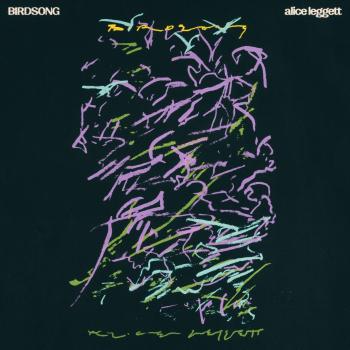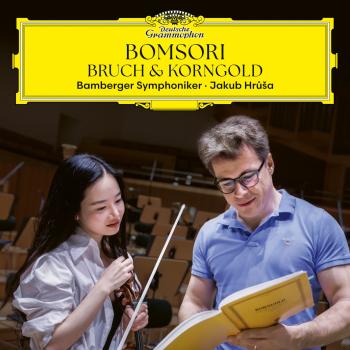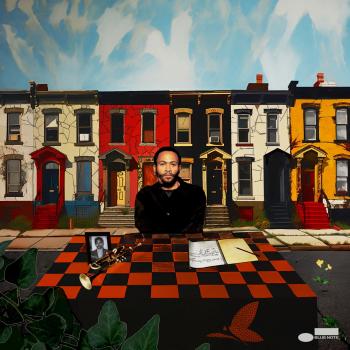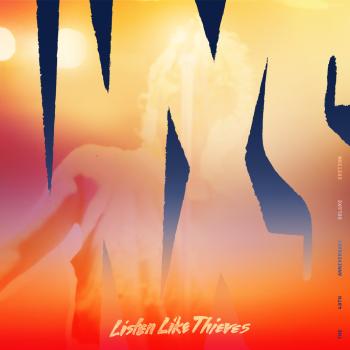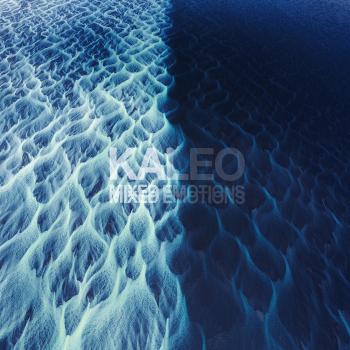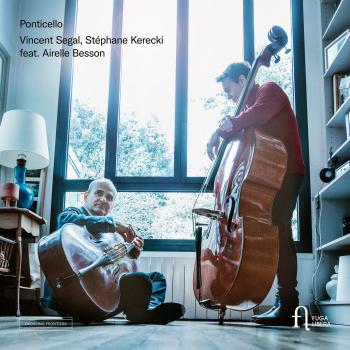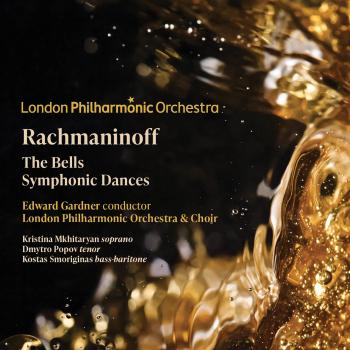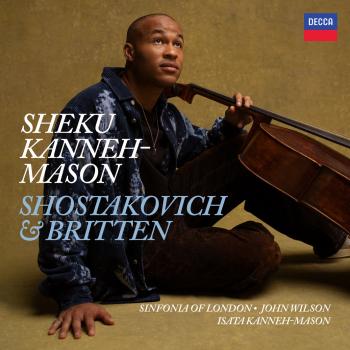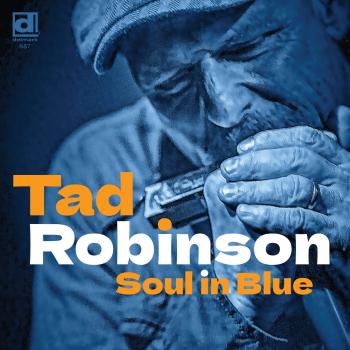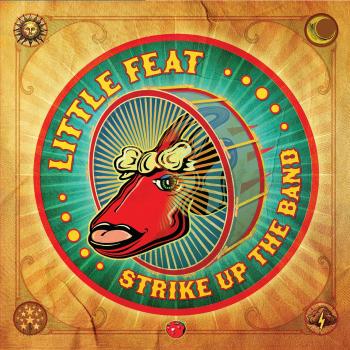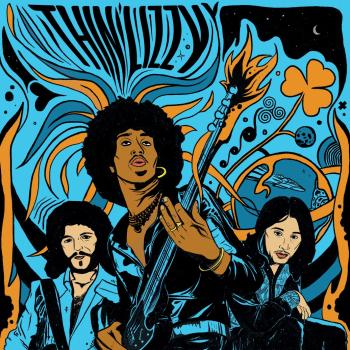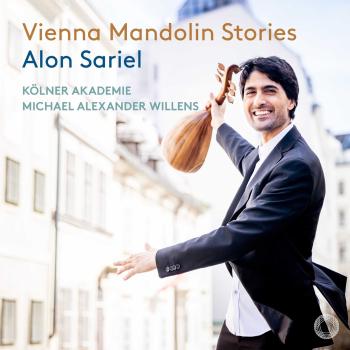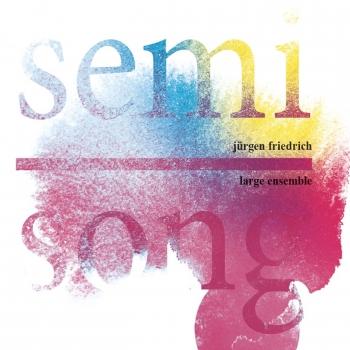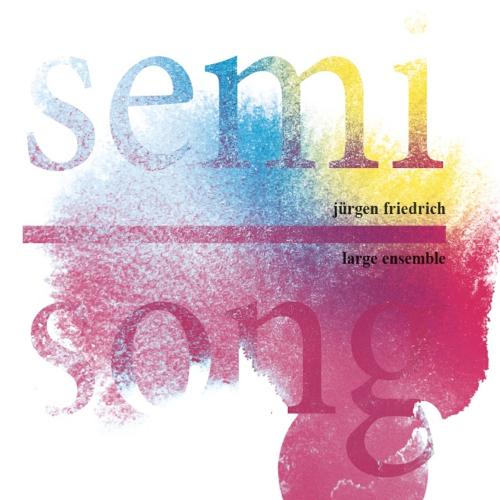
Album info
Album-Release:
2022
HRA-Release:
20.05.2022
Label: nwog records
Genre: Jazz
Subgenre: Crossover Jazz
Artist: Jürgen Friedrich & Jürgen Friedrich Large Ensemble
Composer: Jürgen Friedrich
Album including Album cover
- 1 Infrablue 09:41
- 2 Morpheus 09:31
- 3 Armageddon 07:28
- 4 Blauen 08:21
- 5 Unleash 13:10
- 6 Weave 07:26
- 7 Ritus 12:54
- 8 Loop 02:24
Info for Semi Song
Some musical works open themselves up immediately. You listen once and know what you have. And then there are those that arouse your curiosity, want to be heard again and again until they reveal more and more of themselves from the depth of their own center, in order to manifest their overwhelming complexity in the end. Jürgen Friedrich’s large-scale programSemi Song, recorded by his Large Ensemble, belongs to the latter.
Semi Song is an intoxicating piece of music whose parts merge together into a complete work of art. It bursts the corset of a normal album – whether on CD, vinyl or via streaming. Indeed, this album hints at this quality after just a few bars. But let’s forget for a moment how the sound comes to us, which is just a medium. It doesn’t take much imagination to visualize the immense amount of work that goes into this opus. Jürgen Friedrich himself draws the comparison to a film, whose credits show endless rows of names contributing to such a work of art. In the case of Semi Song, however, the list would be quite short, because apart from the performing musicians and the sound engineer Christian Heck, who was actively involved in the musical result, the entire work on this mammoth project was entirely in Friedrich’s hands. And yet the comparison with film is only partially accurate because Semi Song is more akin to one of those epic TV series of the present whose narrative depth of field often goes far beyond the format of a singular film. In each piece on the album, Jürgen Friedrich describes a self- contained story that is, nevertheless, directly related to all the other pieces on the program.
The plot and dramaturgy of all these pieces are absolutely unpredictable. When a composition begins, the music does not tell us where the journey is going. Different components – of colorfulness, density, dynamics and melodicism – seek new paths in each piece. At the end of each track, the music aspires to find a balance between all its creative elements, just as a circle is closed at the end of the entire suite. After a good 73 minutes, Semi Song ends at the exact moment when everything that needed to be said has been said. The mystery of surprise is exploited to such an extent that it takes hold again and again, even when the repeated enjoyment of the music has long since crossed the border from the new to the familiar. In this respect, Jürgen Friedrich thinks symphonically because the more often one gets involved with the music, the more fascinating its almost limitless variety of forms becomes. Strictly speaking, Semi Song is a musical palimpsest in which new layers of perception keep unfolding.
The Jürgen Friedrich Large Ensemble is an orchestra of soloists. Although the language of the composer – who does not take to the keys himself here, but leaves the piano to Pablo Held – is absolutely anchored in the here and now, he nevertheless follows the virtues of iconic large jazz ensembles such as the Globe Unity Orchestra or the Jazz Composers Orchestra. Unlike many comparable ensembles today, Friedrich gives the soloists involved the greatest possible leeway. If we want to stay with the image of a filmmaker, Friedrich provides script, scenery and costumes, but leaves it to the actors to fill the plot with life according to their liking within the given framework. In other words, the respective soloist is situationally the bandleader.
The line-up reads like a Who’s Who of German Jazz, ranging from Pablo Held to Uli Kempendorff, Steffen Schorn to Bastian Stein, Nils Wogram to Sebastian Gille, from Shannon Barnett via John-Dennis Renken all the way to Fabian Arends, to name but a few. The composer wants to take such an array of independent creativity to the limit with the greatest possible efficiency. “The solos should be able to go somewhere else even in the context of the Large Ensemble if they want to go somewhere else,” postulates sound director Friedrich. “The players should not think they have the task of implementing a certain function within the musical dramaturgy. That would already be too much of a guideline for me. In this large ensemble all participants should feel as if they were on stage with their own quartet.”
This tension between subtle ensemble arcs and expressive solo performances lends each individual moment tremendous vehemence. At certain points, Friedrich deliberately relies on a vacuum, which he describes as a lack of leadership, to draw his fellow players out of their shells. Of course, this only works when the leader and the players have built up great mutual trust. Jürgen Friedrich does not think in terms of instruments or basic timbres, but only in terms of people and characters. What contribution can the respective musician make, what constellations and contrasts result from the personalities of his crew? “If I sense that a person might like to play a solo in a certain environment, then I ask them. That happens completely regardless of whether it’s a trumpet, a trombone or the double bass. It’s all about the personalities. The instrument colors almost don’t matter.”
Jürgen Friedrich's Large Ensemble is not a big band, but rather an orchestra. There are neither the typical brass salvos, nor an omnipresent rhythm carpet. Friedrich exploits the complete spectrum of an orchestra and also allows himself the time necessary to do so. In times of crisis, Semi Song is a stroke of luck, because the work reminds us that art – no matter how much it may have eavesdropped on life – can also be a triumphant luxury. A luxury that makes no claim to exclusivity, but simply reveals itself for what it is: a great, extensive and celebratory festival of the senses.
Johannes Ludwig, alto sax, soprano sax, clarinet, flute, alto flute, piccolo
Leo Huhn, alto sax, clarinet, electronics
Sebastian Gille, tenor sax, soprano sax, clarinet, flute
Uli Kempendorff, tenor sax, clarinet
Steffen Schorn, baritone sax, bass clarinet, c melody sax, bass flute, contra alto clarinet, tubax
Chris Mehler, trumpet, flugelhorn
Bastian Stein, trumpet, flugelhorn
John-Dennis Renken, trumpet, flugelhorn, electronics
Matthias Bergmann, trumpet, flugelhorn
Nils Wogram, trombone
Shannon Barnett, trombone
Moritz Wesp, trombone
Jan Schreiner, bass trombone, tuba
Pablo Held, piano
David Helm, bass
Fabian Arends, drums
Jürgen Friedrich
was born in 1970 in Braunschweig, Germany, and grew up in the Northwestern German state of Lower Saxony. He currently lives in Cologne. Friedrich is known for his work as composer and leader of numerous groups, from small ensembles on through to large bands and orchestras. He studied piano and composition at the Cologne Music Conservatory. Friedrich recorded the first al- bum under his own name with trumpeter Kenny Wheeler as guest. His piano trio with bassist John Hébert und drummer Tony Moreno has played together on both sides of the Atlantic for over 15 years. The trio has recorded five CDs up until this point, including two for Pirouet, Seismo from 2006 and Pollock from 2009. Friedrich’s project Bits & Pieces combines interactive electronics and acoustic instruments employing composed and improvised music. Taking on the role of pianist and conductor with the Cologne Contemporary Jazz Orchestra (CCJO), Friedrich has presented a new pro- gram every month at the Cologne Stadtgarten over the last several years. Jürgen Friedrich is professor at the Mannheim University of Music where he is in charge of master studies in composition and arrangement. He has played with the likes of David Liebman, Kenny Wheeler, and Nils Wogram. Friedrich has worked as a composer, arranger, and conductor with the Sunday Night Orchestra, Maria Schneider Jazz Orchestra, NDR Big Band, HR Big Band, Bujazzo, the Würz- burg Philharmonic Orchestra, and guest artists Michael Brecker and Lee Konitz. He has played concerts throughout Europe, Brazil, the USA, and in various festivals, including Moers, Trytone Amsterdam, Copenhagen, Enjoy Jazz Mannheim, the Cologne Music Triennial, and the Prague Piano Festival. Friedrich has received various national and international awards. In 1997, he was the first European to win the prestigious Gil Evans Award for Jazz Composition. In 1998 and again in 2002 he won the Julius Hempill composition Award. In 2000 he won the city of Cologne’s Jazz/ Improvised Music Award, and in 2001 and 2005 he received Lower Saxony’s Jazz Prize.
Achim Kaufmann
Achim Kaufmann was born in 1962 in Aachen, Germany. After periods in Cologne and Amsterdam, he currently lives in Berlin. As one of the most important pianists in Europe, he is especially active in the intersection between jazz free-improvisation and New Music. Kaufmann’s lyrical play is enriched through his careful use of prepared pianos as well as through electronic distortions. Kaufmann has been active in the music scene since the 1980’s, and in 2001 was the winner of the SWR (South West Radio, Germany) Jazz Prize. Kaufmann has received broad recognition through his own duo, trio, and quartet projects, and work alongside such musicians as Tobias Delius, John Hollenbeck, Peggy Lee, Simon Nabatov, Jochen Rueckert, John Schröder, Henning Sieverts, Chris Speed, Tomász Stanko, and Steve Swallow. Kaufman is constantly touring, playing clubs, concerts, and major festivals with his band projects together with clarinetist and alto saxophonist Michael Moore in their Duo Kaufmann/Moore, in the Trio Kamosc (Achim Kaufmann, Michael Moore, Dylan van der Schyff), and in Gueuledeloup Quartet (Achim Kaufmann, Michael Moore, John Hollenbeck, Henning Sieverts), as well as with the trio Kaufmann/Gratkowski/de Joode. “Tonally, possibly the most daring German jazz pianist” (Frankfurter Allgemeine Newspaper), Kaufmann has recorded two trio CDs with Valdi Kolli and Jim Black on Pirouet, Kyrill (2008), and Verivyr (2011). bislang zwei CDs bei Pirouet.
John Hébert
John Hébert is originally from New Orleans, and currently lives in New York City. He is much in demand, and was named a “Rising Star on Acoustic Bass” bass three years in a row in Downbeat Magazine’s critic’s poll. He has worked with John Abercrombie, Paul Bley, Uri Caine, Marc Copland, Jürgen Friedrich, Mary Halvorson, Fred Hersch, Ingrid Laubrock, Lee Konitz, Paul Motian, Greg Osby, Maria Schneider, Bill Stewart, and Kenny Wheeler. Hébert and Tony Moreno have been part of Jürgen Friedrich’s trio for over fifteen years. Over this time they have recorded five al- bums together.
Hayden Chisholm
Hayden Chisholm was born in 1975 near Auckland, and raised in New Plymouth, New Zealand. Today he calls Cologne and Barcelona home. He has visited and studied cultures worldwide, and thereby perfected his ability to play microtones on the saxophone. He became well-known in the 1990’s, especially through his work with Nils Wogram’s Root 70. His debut album, Circe, was released in 1996. He plays with the action artist Rebecca Horn and the computer musician Marcus Schmickler, directs his own festival in the Cologne Loft, and has formed his own music label. Chisholm has also worked as saxophonist, clarinetist, and keyboard player on albums by Burnt Friedman, Jaki Liebezeit, David Sylvian and Sebastian Gramss’ Underkarl.
John Hollenbeck
John Hollenbeck calls both New York City and Berlin home. Through his experiences in jazz, world music, and modern compositions, he has developed a unique musical language that is both sophisticated and accessible. His impressive career encompasses not only various projects as drummer; he is also an accomplished composer and teaches drums and improvisation in Berlin. He has worked with the Village Vanguard Orchestra, Bob Brookmeyer, Meredith Monk, Cuong Vu and Pablo Ziegler. Hollenbeck has been awarded numerous prizes and fellowships, including the prestigious Guggenheim Fellowship. Hollenbeck’s own projects include the Claudia Quintet with Chris Speed, Matt Moran, Ted Reichman und Drew Gress, John Hollenbeck’s Large Ensemble, as well as an experimental duo with Singer Theo Bleckmann.
This album contains no booklet.

